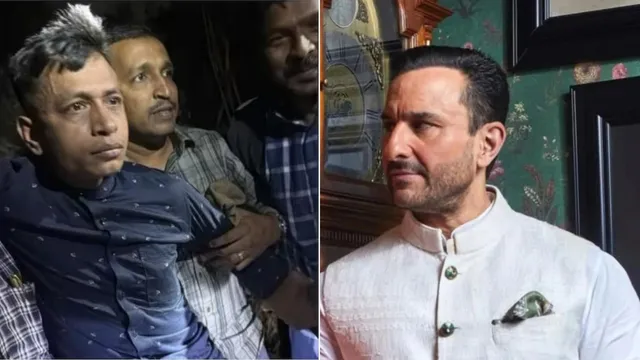A critical piece of forensic evidence has brought a breakthrough in the case involving the attempted break-in at actor Saif Ali Khan’s Bandra residence. Authorities have confirmed that a palm print discovered at the crime scene matches that of the arrested suspect, Bangladeshi national Mohammad Shariful Islam.
The match was established after forensic specialists from the Fingerprint Bureau analysed three partial prints lifted from the building. One of them, found on a wooden staircase door on the eighth floor, was determined to be identical to Islam’s left palm, as verified against police records taken post-arrest. The finding has now been included in the official chargesheet filed by the Bandra police.
Police Reportedly Reveals Details of the Crime
Officials believe the suspect left the mark while forcefully pushing open the door during his ascent through the apartment complex. “He moved through the floors, likely starting from the first and attempting to access various flats up to the eleventh. The eighth-floor door seems to have been pushed with enough pressure to leave a clear print,” said a senior investigating officer.
While the palm impression on the eighth floor provided crucial evidence, other prints recovered during the investigation were not as conclusive. Two smudged prints found on the ninth-floor door lacked sufficient ridge detail, making them unsuitable for comparison. Likewise, attempts to lift fingerprints from inside the actor’s home including bathroom surfaces, cupboards, and bedroom doors did not yield usable results, likely due to faint contact or disturbance after the incident.
The incident occurred on January 16, when Islam allegedly entered Saif Ali Khan’s residential building with the intent to commit robbery. Police say he made an attempt to access the actor’s apartment but failed and fled the scene. No injuries were reported.
Key Evidence Links Accused to Crime
Additional evidence collected by law enforcement further strengthens the case. Investigators have recovered the weapon believed to have been used, along with blood-stained clothing, a backpack, and location data traced via mobile tower records. The accused was also positively identified by the complainant during a police line-up. Facial recognition analysis by the Forensic Science Laboratory (FSL) added further weight to the evidence.
Explaining the importance of even a single fingerprint match, one officer noted, “While not every sample from a crime scene is viable, a single strong match can establish presence and involvement. Especially when supported by other forms of evidence, it can significantly bolster the case.”
Durable forensic and material evidence now positions the police to proceed confidently with legal action. The case, which initially lacked clear leads, has now taken a decisive turn with this forensic link directly connecting Islam to the crime scene.


